WHAT TO DO IF YOU NEED TO WRITE A STORY AND YOU’RE STUCK:
Mastering the art of writing captivating mysteries. Unleash your creativity and weave intricate tales of crime and suspense.
MYSTERY NOVEL BRAINSTORMING WORKSHEET
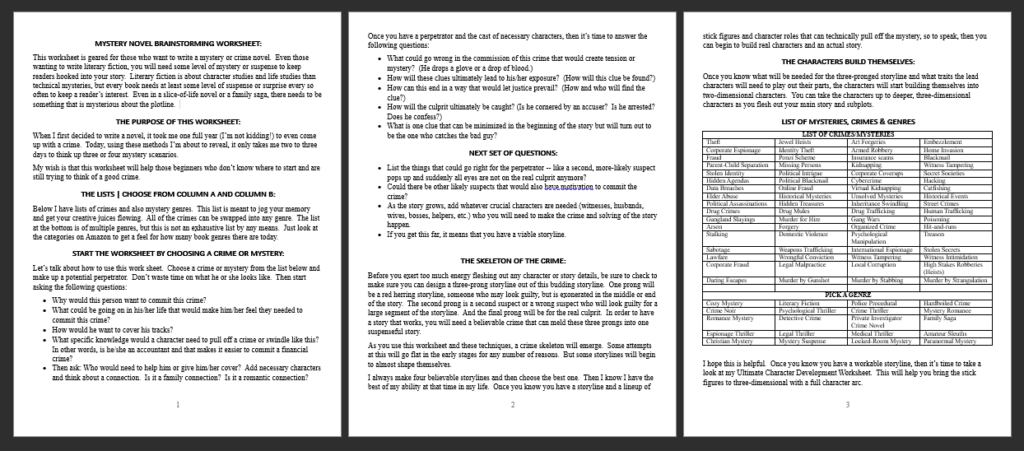
This worksheet is geared for those who want to write a mystery or crime novel. It helps with writer’s block too. It breaks down the process into small bite-sized pieces and it will get your motor going without any effort.
Just follow the suggestions, summed up easily below, and you will have at least the start of something within minutes. There is a link below to download the three-page instructional and checklist.
If you are an intermediate novel writer, here is a graphic of the overall process without the instructional questions:
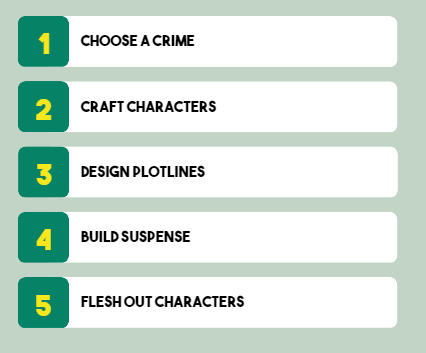
THIS WORKSHEET HAS MULTIPLE PURPOSES:
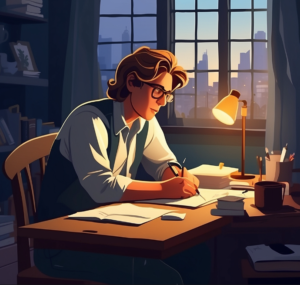 If you are stumped for a main story, or if you are stumped for what happens now, or even if you have written yourself into a bit of a corner, this instructional will help, along with your own creativity and thinking, to bring about new possibilities.
If you are stumped for a main story, or if you are stumped for what happens now, or even if you have written yourself into a bit of a corner, this instructional will help, along with your own creativity and thinking, to bring about new possibilities.
Jump into the series of steps wherever you are in the writing process and it will help you restart your engine. Once you go through the process a time or two, I’m sure it will become your go-to procedure.
THE LISTS | CHOOSE FROM COLUMN A AND COLUMN B:
Below is a closer look at Page 3 of the Worksheet where it will give you a wide birth of choices for mysteries and/or crimes. It’s hard for one mind to think of all the possibilities without some kind of aid no matter how creative one is.
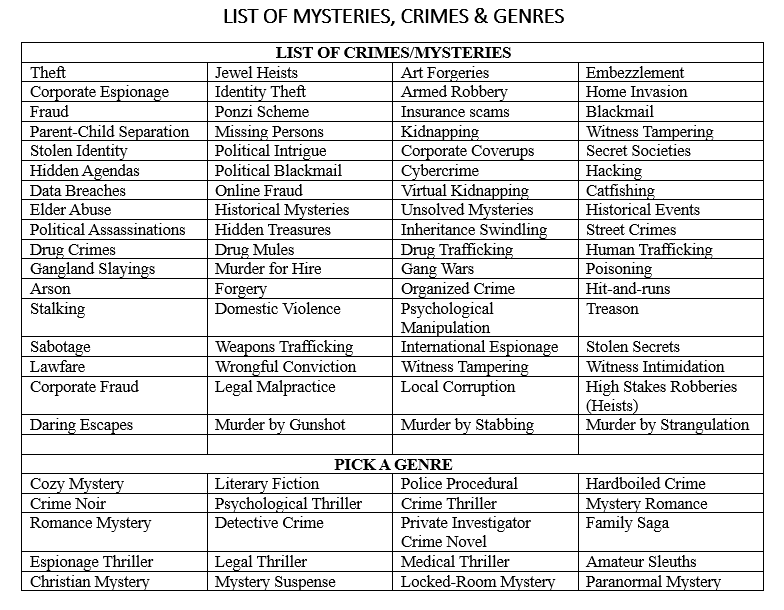
START THE WORKSHEET BY CHOOSING A CRIME OR MYSTERY:

Let’s talk about how to use this work sheet. Choose a crime or mystery from the list below and make up a potential perpetrator. Don’t waste time on what he or she looks like. Then start asking the following questions:
- Why would this person want to commit this crime?
- What could be going on in his/her life that would make him/her feel they needed to commit this crime?
- How would he want to cover his tracks?
- What specific knowledge would a character need to pull off a crime or swindle like this? In other words, is he/she an accountant and that makes it easier to commit a financial crime?
- Then ask: Who would need to help him or give him/her cover? Add necessary characters and think about a connection. Is it a family connection? Is it a romantic connection?
THE NEXT SET OF QUESTIONS TO ASK:
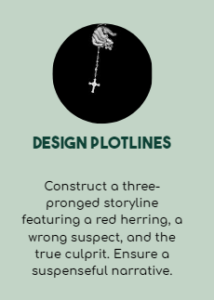 Once you have a perpetrator and the cast of necessary characters, then it’s time to answer the following questions:
Once you have a perpetrator and the cast of necessary characters, then it’s time to answer the following questions:
- What could go wrong in the commission of this crime that would create tension or mystery? (He drops a glove or a drop of blood.)
- How will these clues ultimately lead to his/her exposure? (How will this clue be found?)
- How can this end in a way that would let justice prevail? (How and who will find the clue?)
- How will the culprit ultimately be caught? (Is he cornered by an accuser? Is he arrested? Does he confess?)
- What is one clue that can be minimized in the beginning of the story but will turn out to be the one who catches the bad guy?
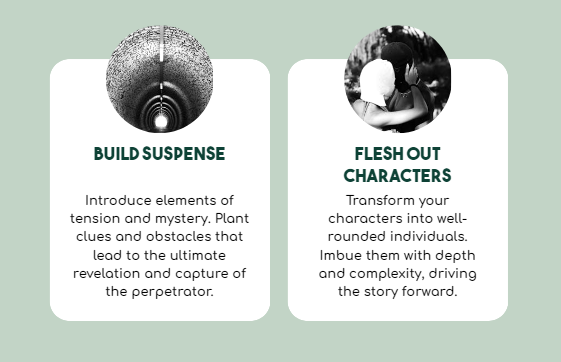
NEXT SET OF QUESTIONS:
- List the things that could go right for the perpetrator — like a second, more-likely suspect pops up and suddenly all eyes are not on the real culprit anymore?
- Could there be other likely suspects that would also have motivation to commit the crime?
- As the story grows, add whatever crucial characters are needed (witnesses, husbands, wives, bosses, helpers, etc.) who you will need to make the crime and solving of the story happen.
- If you get this far, it means that you have a viable storyline.
THE SKELETON OF THE CRIME:
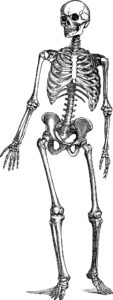 Before you exert too much energy fleshing out any character or story details, be sure to check to make sure you can design a three-prong storyline out of this budding storyline. One prong will be a red herring storyline, someone who may look guilty, but is exonerated in the middle or end of the story. The second prong is a second suspect or a wrong suspect who will look guilty for a large segment of the storyline. And the final prong will be for the real culprit. In order to have a story that works, you will need a believable crime that can meld these three prongs into one suspenseful story.
Before you exert too much energy fleshing out any character or story details, be sure to check to make sure you can design a three-prong storyline out of this budding storyline. One prong will be a red herring storyline, someone who may look guilty, but is exonerated in the middle or end of the story. The second prong is a second suspect or a wrong suspect who will look guilty for a large segment of the storyline. And the final prong will be for the real culprit. In order to have a story that works, you will need a believable crime that can meld these three prongs into one suspenseful story.
 As you use this worksheet and these techniques, a crime skeleton will emerge. Some attempts at this will go flat in the early stages for any number of reasons. But some storylines will begin to almost shape themselves.
As you use this worksheet and these techniques, a crime skeleton will emerge. Some attempts at this will go flat in the early stages for any number of reasons. But some storylines will begin to almost shape themselves.
I always make four believable storylines and then choose the best one. Then I know I have the best of my ability at that time in my life. Once you know you have a storyline and a lineup of stick figures and character roles that can technically pull off the mystery, so to speak, then you can begin to build real characters and an actual story.
THE CHARACTERS BUILD THEMSELVES:
Once you know what will be needed for the three-pronged storyline and what traits the lead characters will need to play out their parts, the characters will start building themselves into two-dimensional characters. You can take the characters up to deeper, three-dimensional characters as you flesh out your main story and subplots.
LIST OF MYSTERIES, CRIMES & GENRES
I hope this is helpful. Once you know you have a workable storyline, then it’s time to take a look at my Ultimate Character Development Worksheet. This will help you bring the stick figures to three-dimensional with a full character arc.


 Writing a novel is a huge undertaking. There are many things that go into the writing of a fiction story. The best tip I can pass on is this: Break everything down into little bite-sized pieces. By doing this, you can reduce a huge project down to do-able portions that can be done whether you have 2 hours a week to write or two full days! It only requires a little planning and organization.
Writing a novel is a huge undertaking. There are many things that go into the writing of a fiction story. The best tip I can pass on is this: Break everything down into little bite-sized pieces. By doing this, you can reduce a huge project down to do-able portions that can be done whether you have 2 hours a week to write or two full days! It only requires a little planning and organization.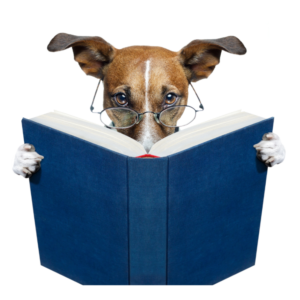 It’s important to keep reading as your own journey as a writer continues. Each author has a different style and uses different storytelling techniques. The stories don’t even have to be great. You can learn from the good, the bad and the bland. Just analyzing what made a book bland is a great lesson in itself. Did the story need more action? Did the story get stuck somewhere?
It’s important to keep reading as your own journey as a writer continues. Each author has a different style and uses different storytelling techniques. The stories don’t even have to be great. You can learn from the good, the bad and the bland. Just analyzing what made a book bland is a great lesson in itself. Did the story need more action? Did the story get stuck somewhere? 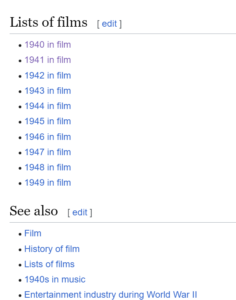 or other books you read. Reading other authors is crucial no matter where you are on the writing spectrum. However, when you’re new, you can learn a lot from watching mystery or crime noir movies. I like movies from the 1940s, 1950s, and 1960s. The movies in these decades didn’t have CGI and the directors had to use the stage to tell the story. They used wider shots and props to assist the storytelling. By watching these older movies, you can learn a lot regarding writing.
or other books you read. Reading other authors is crucial no matter where you are on the writing spectrum. However, when you’re new, you can learn a lot from watching mystery or crime noir movies. I like movies from the 1940s, 1950s, and 1960s. The movies in these decades didn’t have CGI and the directors had to use the stage to tell the story. They used wider shots and props to assist the storytelling. By watching these older movies, you can learn a lot regarding writing. 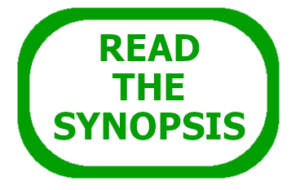 It’s a good idea to read the synopsis before you view the movie. Knowing at least a basic outline of the story will allow you to absorb more as an author. If you go into the movie blindly, you will be “experiencing the movie” as a viewer only. By knowing ahead of time what story will be unfolding, it will allow you to watch specifically for certain scenes to unfold. You can watch what tools are used to move the story along.
It’s a good idea to read the synopsis before you view the movie. Knowing at least a basic outline of the story will allow you to absorb more as an author. If you go into the movie blindly, you will be “experiencing the movie” as a viewer only. By knowing ahead of time what story will be unfolding, it will allow you to watch specifically for certain scenes to unfold. You can watch what tools are used to move the story along. 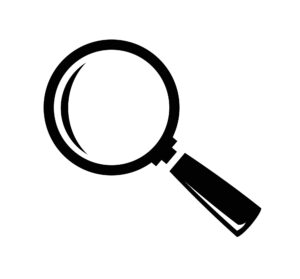
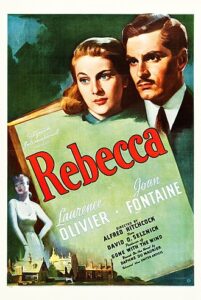 If you are looking for a suggestion, I would suggest Rebecca for the first movie. This movie was directed by Alfred Hitchcock and it has a lot of gothic atmosphere. There is also a psychological plotline in this story so it is a goldmine for learning storytelling tools.
If you are looking for a suggestion, I would suggest Rebecca for the first movie. This movie was directed by Alfred Hitchcock and it has a lot of gothic atmosphere. There is also a psychological plotline in this story so it is a goldmine for learning storytelling tools.  When I first decided to write a novel, it took me one full year (I’m not kidding!) to even come up with a crime. Today, using these methods I’m about to reveal, it only takes me two to three days to think up three or four mystery scenarios.
When I first decided to write a novel, it took me one full year (I’m not kidding!) to even come up with a crime. Today, using these methods I’m about to reveal, it only takes me two to three days to think up three or four mystery scenarios.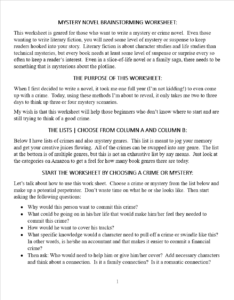 Let’s talk about how to use this work sheet. Choose a crime or mystery from the list below and make up a potential perpetrator. Don’t waste time on what he or she looks like. Then start asking the following questions:
Let’s talk about how to use this work sheet. Choose a crime or mystery from the list below and make up a potential perpetrator. Don’t waste time on what he or she looks like. Then start asking the following questions: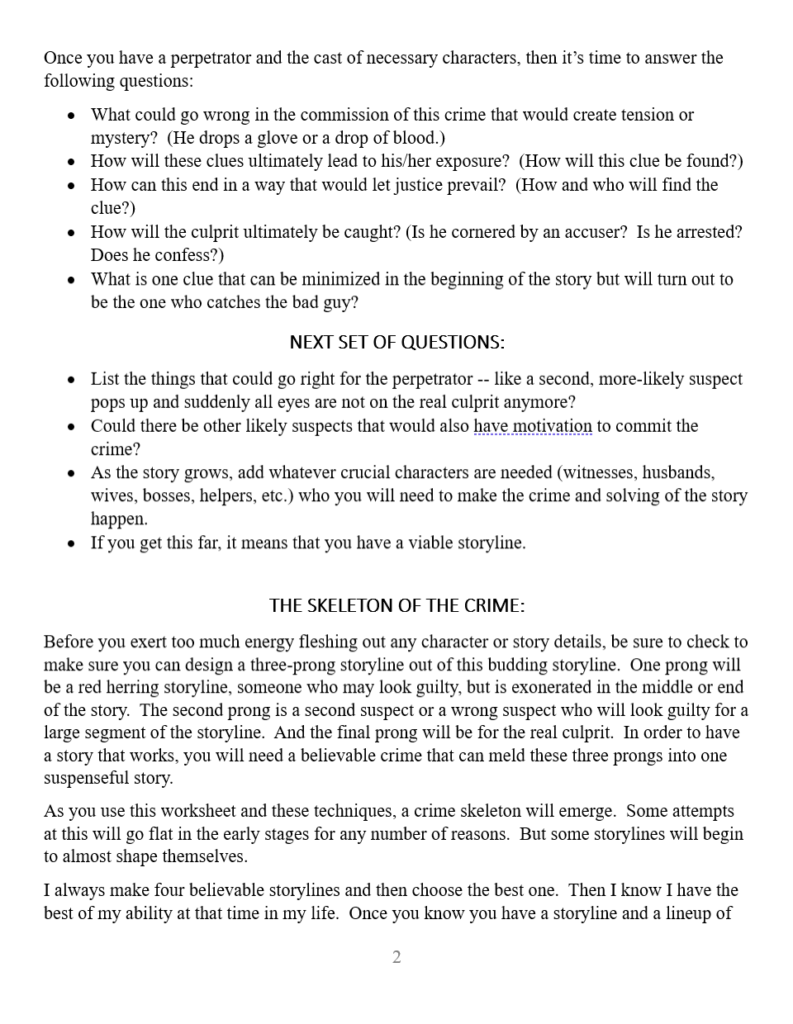 Once you have a perpetrator and the cast of necessary characters, then it’s time to answer the following questions:
Once you have a perpetrator and the cast of necessary characters, then it’s time to answer the following questions: